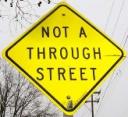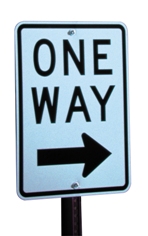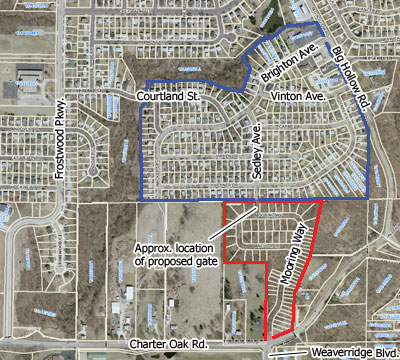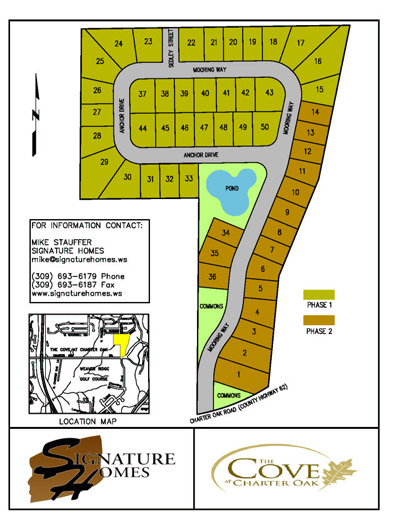 At the end of a Journal Star article on Friday about the new arbor at Rebecca Place being dedicated and the planned celebration for it, there was a brief mention that neighbors may want that street closed permanently:
At the end of a Journal Star article on Friday about the new arbor at Rebecca Place being dedicated and the planned celebration for it, there was a brief mention that neighbors may want that street closed permanently:
In the coming months, [Second District Councilwoman Barbara] Van Auken said the neighborhood association and city officials, will consider if Rebecca Place should be redeveloped into a cul-de-sac dead-ending at Main at the foot of the arbor.
She said while the arbor was under construction – and Rebecca was closed to traffic at Main – many neighbors drove on Laura or Bradley avenues into Rebecca with little problems. The biggest issue, Van Auken said, in reconstructing Rebecca into a cul-de-sac is ensuring public safety vehicles have access.
There’s even a rumor going around that they might want to install a gate, ala The Coves, at Rebecca and Main. Prohibiting or limiting access from Main street into the Uplands neighborhood is also being considered by that neighborhood association.
I like to call ideas like this the “suburbanization” of our urban areas. Streets in older, urban areas are on a grid system of rectilinear through-streets divided into city blocks. Starting in the 1940s and beyond, developers began building curvilinear streets for residences and business parks that terminated in dead-ends/cul-de-sacs, with only one or two access points to the entire neighborhood.
Cutting off urban streets to make them emulate their suburban counterparts is a bad idea. It creates more problems than it supposedly solves.
Inside the neighborhoods
Reducing the number of access points will always put more pressure on the interior streets. Van Auken stated “many neighbors drove on Laura or Bradley avenues into Rebecca with little problems” while Rebecca was closed at Main. I’ll bet they also went north on Cooper to get to Main. So whereas Rebecca currently has direct access to Main, by closing the street, more traffic will be generated onto the interior streets of Laura, Bradley, and Cooper.
Likewise in the Uplands, by limiting access to Main, more traffic will be dumped onto Columbia Terrace and its intersection with University Street. The problem is even greater here, since the Uplands has nearly 300 homes. If you figure most of those homes have two cars, that’s a lot of traffic that used to be filtered through six access points (five intersections with Main) now being largely diverted to one access point (Columbia Terrace and University). It makes Columbia Terrace a street-hierarchy-style collector, adding volume and putting additional pressure on it. This doesn’t make things safer for pedestrians or children on the interior streets.
Incidentally, cutting off access doesn’t do anything about speeding. Many people complain about “cut-through traffic,” when they really are complaining about speeding traffic. I don’t know of anyone that would mind people cutting through the neighborhood at 20 or 25 miles per hour. The trouble is, the people who live in the neighborhood are generating the most traffic, and they are just as prone to speeding as someone looking for a short-cut. So we can cut off access and still not solve the underlying issue: speed.
Outside the neighborhoods
Cutting off streets makes things even worse on Main and University. At a recent traffic forum, neighbors talked about how they wanted the traffic on Main street to slow down, and how Main street should be narrowed and made more pedestrian-friendly. In fact, it was this desire that made many neighbors worry that if Main were slowed too much, it would increase traffic cutting through their neighborhoods — hence, the desire to cut off access in anticipation of improvements to Main street. But the trouble is, cutting off access to the neighborhoods will have the opposite effect on Main and University than what neighbors desire.
Changes at Bradley University are already putting more pressure on Main and University. The city agreed to vacate Maplewood and Glenwood through campus (i.e., between Main street and Bradley avenue), so those points of access are now gone for students. Plus, Bradley is building a large parking deck at Maplewood and Main that will have access only to Main. So all parking for events at the Fieldhouse and the arena that will replace it will have to enter and exit from Main. If Maplewood had remained a through street, additional access could have been had from Bradley Avenue and its connections to Western and University.
By residents not letting people “cut through” their neighborhoods, all the traffic generated by the university will have to stay on Main and University. Plus, the residents themselves will be forcing themselves to use these streets more. If access in the Uplands is restricted, for example, every resident who wants to travel west on Main to get to Western or Farmington road would have to travel on Columbia Terrace to University south to Main street west. This especially puts increased pressure on the University/Main intersection, which is already a nightmare. If access weren’t restricted, those traveling west could enter Main as far west as Parkside drive, which would ease congestion at the Main/University intersection.
The bottom line is this: The university’s and neighborhoods’ actions will cause Main and University to carry a greater volume of traffic, which will result in these arterials becoming wider and faster, which is the exact opposite of what the residents say they want to see. It will further exacerbate neighborhood isolation and make the overall area more pedestrian-hostile, less safe for Bradley students, residents, and children.

 I meant to post this awhile ago and just never got around to it. One of the things the Heart of Peoria Commission is focusing on these days is fixing the streets. That doesn’t just mean filling potholes. It means making the streets more balanced thoroughfares — streets that comfortably accommodate not just cars, but also pedestrians, bicycles, and mass transit.
I meant to post this awhile ago and just never got around to it. One of the things the Heart of Peoria Commission is focusing on these days is fixing the streets. That doesn’t just mean filling potholes. It means making the streets more balanced thoroughfares — streets that comfortably accommodate not just cars, but also pedestrians, bicycles, and mass transit. 

 When you watch a movie and there’s a car crash, there’s always a giant crashing sound that accompanies it. Now, we all know that movies are not reality and that sound effects are often exaggerated, but since you don’t see or hear real car crashes every day, you sort of come to expect them to sound the way they sound in the movies. You know: “Khkhkhkhkhkhkhkkh!”
When you watch a movie and there’s a car crash, there’s always a giant crashing sound that accompanies it. Now, we all know that movies are not reality and that sound effects are often exaggerated, but since you don’t see or hear real car crashes every day, you sort of come to expect them to sound the way they sound in the movies. You know: “Khkhkhkhkhkhkhkkh!”